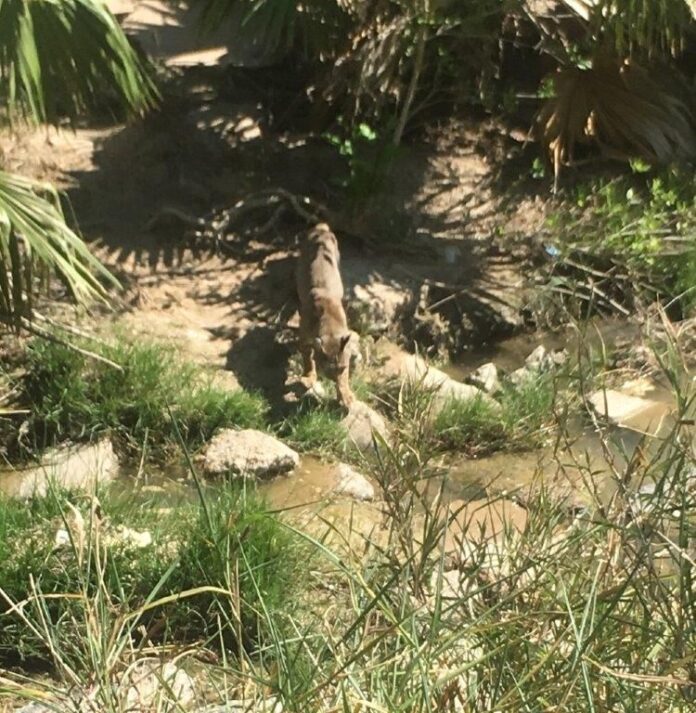HARLINGEN – Lisa Anderson was more concerned about snakes.
So as she clambered down the bank of the Arroyo Colorado at Hugh Ramsey Nature Park Monday, her eyes were clearly focused on the ground.
When she looked up, a cat 30 to 40 feet away caught her eye. It was bigger than her 75-pound German shepherd.
“It was walking toward me on the rocks, and I go ‘Whoaaa. What is that?’” she recalled yesterday. “I could see the tail whisking back and forth, and I thought, that’s a long tail, that’s a big cat.”
So Anderson snapped a photo with her cell phone and decided to make a tactical retreat.
“I wish I had gotten a better picture, but my first instinct was to go back up the hill,” she said. “I didn’t want it to feel threatened.”
Anderson’s description of the cat would seem to be that of a mountain lion, and not a bobcat, a species more common in Hugh Ramsey Nature Park and the Harlingen Thicket.
But Dr. Michael Tewes, regents professor and research scientist at Texas A&M-Kingsville, said yesterday he believes the photograph is that of a bobcat.
“After 35 years, I have perhaps a rare perspective on cat observations and biology,” Tewes said via email.
“The white on the back of the ears are diagnostic for separating those two felids. Also, the 6- to 8-inch tail of a bobcat can flick, and appear long,” he said. “More than once, folks have even interpreted house cats as cougars.”
Dr. Hilary Swarts, a wildlife biologist with the U.S. Fish and Wildlife Service who also is an expert on wildcats, said she believes it probably was a bobcat as well.
“It’s not at all impossible that it’s a mountain lion in that they’ve been seen in this area,” she said. “But I would say the tufts of the ears and the size scaled to the rest of it really makes me think it’s a bobcat.”
Mountain lions in the United States generally weigh from 70 to 160 pounds. They’ve been recorded previously in the Harlingen area.
In March 2011, a young male mountain lion tripped a game camera in Laguna Atascosa Wildlife Refuge and left an image of himself. It is believed that lion came down the Arroyo Colorado through Harlingen on its way east to the refuge.
Young male mountain lions, just like young male ocelots, are often driven out of the territories where they’re born by older, larger males. That leads them to try to find a place of their own to roam, and the search often brings them into contact with humans.
In Texas over the past decade, mountain lions appear to be expanding their range, Texas Parks and Wildlife Department officials say. They’re found throughout the Trans-Pecos, as well as the brushlands of South Texas and portions of the Hill Country.
“In the off-chance it is a mountain lion,” Swarts said of the Ramsey Park sighting, “people don’t need to be worried because there’s so much food for mountain lions down here, such as deer and small prey.
For the rest of this story and many other EXTRAS, go to our premium site, www.MyValleyStar.com.
Subscribe to it for only $6.99 per month or purchase a print subscription and receive the online version free, which includes an electronic version of the full newspaper and extra photo galleries, links and other information you can’t find anywhere else.




